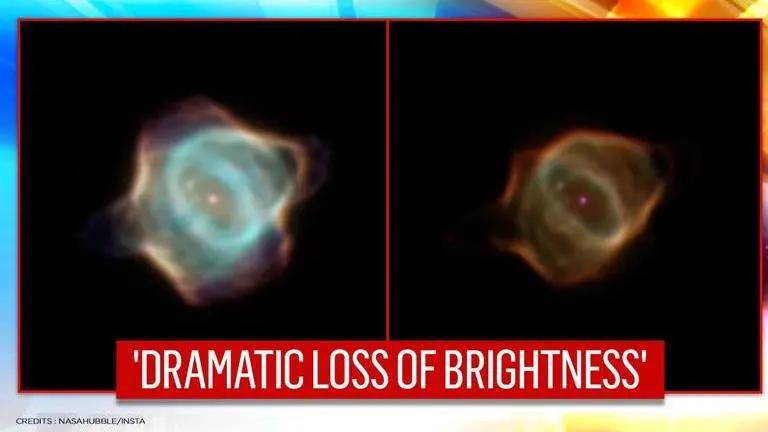Updated 9 January 2021 at 20:12 IST
Hubble telescope captures images of Stingray nebula in its 'final stages of life'
Scientists discovered that the Stingray Nebula has been fading precipitously since the past two decades as Hubble telescope captured two different images.
- Science News
- 3 min read

NASA astronomers have been sounding worried about the rapidly fading gases of star Hen 3-1357, the youngest Planetary Nebula in space. In the stills captured by NASA’s Hubble Space Telescope, scientists discovered that the Stingray Nebula has been fading precipitously since the past two decades as its brightness diminished frantically. Hubble captured two images 20 years apart. The first image was taken with the Wide Field and Planetary Camera 2 in March 1996, where the aging star appeared in good shape, but in the second image taken in 2020, the nebula’s central star was seen in its final stages of life.
“Nebula that has drastically dimmed in brightness and changed shape. Bright, blue, fluorescent tendrils and filaments of gas toward the center of the nebula have all but disappeared, and the wavy edges that earned this nebula its aquatic-themed name are virtually gone,” NASA informed in a release.
NASA said in a release that the once bright and young nebula was no longer standing out against the black velvet background of the vast universe. “This is very, very dramatic, and very weird,” said team member Martín A. Guerrero of the Instituto de Astrofísica de Andalucía in Granada, Spain. “What we’re witnessing is a nebula’s evolution in real-time. In a span of years, we see variations in the nebula. We have not seen that before with the clarity we get with this view.”
[This image compares two drastically different portraits of the Stingray nebula captured by NASA’s Hubble Space Telescope 20 years apart. The image on the left, taken with the Wide Field and Planetary Camera 2 in March 1996, shows the nebula’s central star in the final stages of its life. Credit: NASA]
Advertisement
'Dying star' at the center
Scientists discovered a reduction in the glowing nitrogen, hydrogen, and oxygen in the dying star at the center of the nebula. According to the astronomers, the dip in the oxygen emission levels diminished the brightness by a factor of nearly 1,000 between 1996 and 2016. “Changes in nebulae have been seen before, but what we have here are changes in the fundamental structure of the nebula,” said Bruce Balick of the University of Washington, Seattle, who led the research on Stingray Nebula. He added that the nebula was getting fainter at an unprecedented rate. “This is something confirmed with Hubble’s visual acuity,’ he informed. Scientists found that the nebula was nearing its death as its star SAO 244567 expanded due to a temperature drop, emitting less ionising radiation. Astronomers speculated that the nebula will become almost undetectable in 20 or 30 years.
Advertisement
Published By : Zaini Majeed
Published On: 9 January 2021 at 20:12 IST

